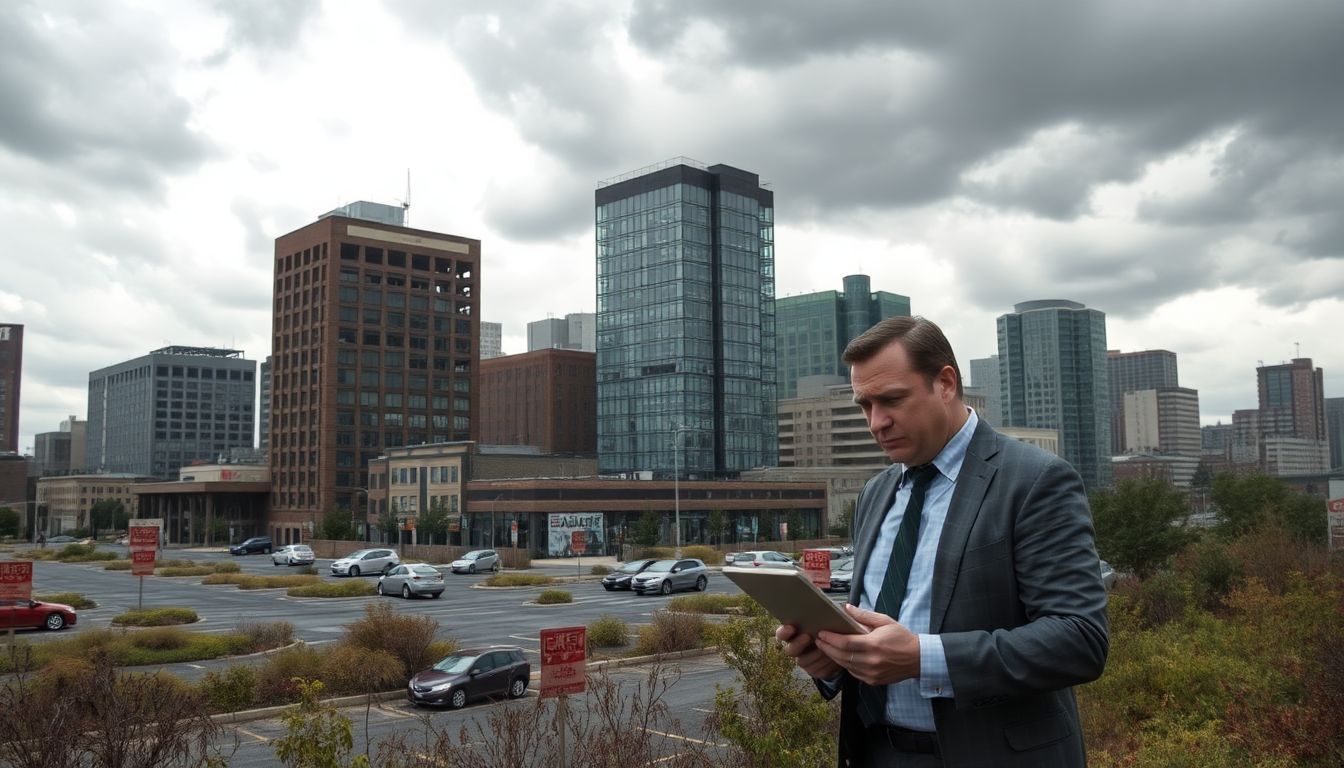Introduction
The US commercial real estate (CRE) market now finds itself in serious trouble. Signs of trouble are beginning to show. Property values are cratering, occupancy rates are crumbling, and defaults are happening once too often. Nobody needs to be told that this scenario sends chills up the spines of investors, developers, and other players in real estate. Rather, a decent understanding of the present situation will speak volumes toward aiding any really intelligent decisions in a blind environment.
The Roots of the US Commercial Real-Estate Crisis
Historical Perspective and Market Cycles
Past crises like the 2008 crash tell you what may be going wrong! As the market overheats, it somehow plunges. At this point, the borrower becomes over-levered, and subsequently, the value of the property declines. Old-school teachings caution one not to miss the occasional sign before big trouble comes knocking.
Impact of Economic Factors
Interest rates go up, and so do the costs of borrowing. Higher mortgage share makes it even tougher to keep the deals alive. Same time, inflation skyrocketed the prices of construction materials, wages, and property management budgets. The burden is laid upon both the landlords and investors, squeezing the market further.
Pandemic Disruptions
COVID has changed business ideas forever. Most employees want to work from home instead of coming to the office. Losing empty offices means less rent collected. Retail had already plummeted during the lockdown before hotels and restaurants followed suit. This change in business-impaired funds severely, almost instantaneously, for some assets.
Fundamental Changes alongside Disruptive Technology
E-commerce started to grow almost rapidly. Retail spaces with foot traffic are losing less activity now. Meanwhile, with the rise of flexible workspaces, the demand for traditional office spaces has been immensely reduced. Therefore, these factors shake the very foundations of CRE.
Current Signs Testing for a Crisis
Declining Property Values
Market information indicates that, indeed, property prices are falling in the major US cities. Commercial buildings may be valued less today than they were yesterday or a year ago. Stuff like this highlighted decaying markets on the rise of investor fears.
Heightened Loan Defaults and Foreclosures
More loans secured by commercial property have gone into default. Stats point to an increase in foreclosure and delinquencies from the CMBS business. The bad loans are a further strain on the banks and lenders.
Dip in Occupancy Rates
The occupancy rates for general office, retail, and industrial properties are heading down. Corporations are leasing less space as they are consolidating tenants. Fewer tenants mean minimizing losses for owners of this property.
Investor Sentiment and Market Will
Investor surveys show caution. Loss aversion keeps many from buying new property. Confidence is bleak, which operates to kill the recovery.
Consequences Downstream
Investors and Asset Managers
Liquidity is draining from portfolios. Clients are panicked about diminishing amounts of funds, hence begin liquidating their assets. Many are opting for safer investments or to hedge against risks.
Developers and Builders
Much work has been stalled or canceled. Adaptive reuse is now much on the minds of developers—keeping buildings for other new uses—and applying caution in this diversified direction even in risky times.
Tenants and Occupants
Cost impacts are being felt most by tenants. Some relocate or downgrade consumption to save costs. Small and newly-economy companies feel the most pressure. There will be a bigger trend toward consolidation in the markets.
Financial Institutions and Creditors
Besides that, there is additional loan defaulting being added to anguishing lenders’ portfolios-rescheduling could be good for some. Other options that could be explored include restructuring the loan, and perhaps even a bailout, might be possible. Risk management has now gone up in priority levels.
Strategies for Surviving the Crisis
For the Investors
A mix of real estate interests is wise. Research the potential acquisition thoroughly before committing to buy. It is the flexibility that helps absorb unforeseen blows.
For Developers
Repurpose space. Turn retail spaces into areas of apartment-type use or offices into shared workspaces. Apply for government programs for more funding.
For Tenants
Francis, negotiate flexible lease conditions. Endeavor to design some alternative or shared working solutions. For instance, today’s cost-cutting forecasts do not prevent the future outspread of havoc.
For Policymakers and Regulators
Offer accommodation for distressed assets as well as loans. Create regulations oriented toward enabling principled lending practices. That goes against everyone’s interests to keep the market buoyant.
Future Outlook and Recovery Prospects
Expert opinion and judgment foresee recovery likely taking several years before any possibilities under consideration. The shift would be towards smaller secondary cities with softer prices; new growth areas may spring forth: these could be data centers and cold storage. These technological tools could provide a new lease of life to CRE through improvements in building efficiency and management.
Conclusion
The US commercial real estate sector is nowadays under serious strain. The prevailing indicators of the ongoing crisis would be downward property values, increasing defaults, and changing demands from tenants. Nevertheless, these could be reversed through smart strategies and a clear vision of what comes next. Flexibility and good information are your best friends-don’t wait for the storm to pass. Those opportunities will be there with time. Afterward, it might find its way to growing again, provided you ensure you are aware and alert to carving out new paths.
